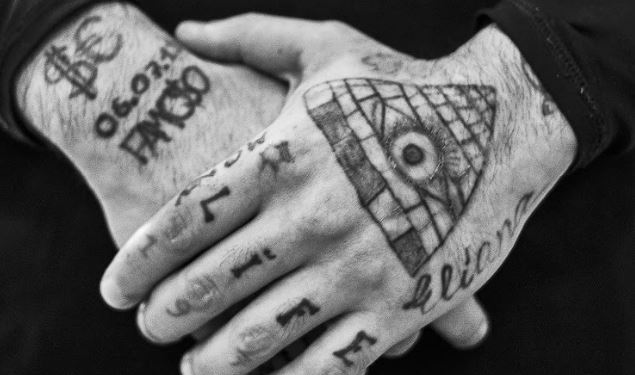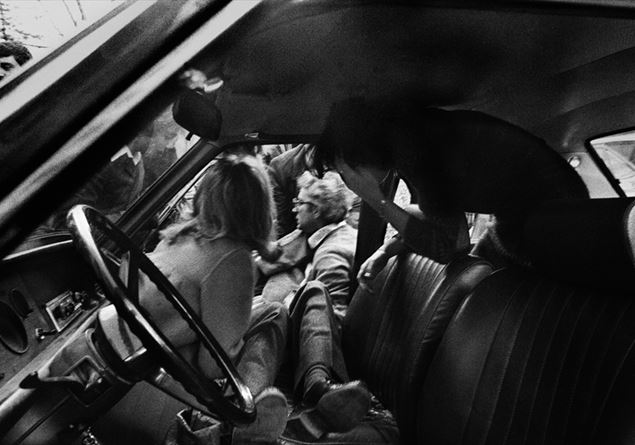The killer came towards the car with that strange way of walking, “bobbing”, the witnesses say. In his pocket he had a 38 caliber revolver. His face, half hidden by the hood of a blue K-way, revealed two impassive eyes, which met the gaze of Irma, the wife of the president of the Sicily Region, a slender, blond woman sitting in the front seat. . The killer fired six shots, shattering the windows of the two doors, going around the car, in front of his wife, daughter and mother-in-law, dismayed inside the 132 as soon as it left the garage in via Libertà, while his son Bernardo, at the entrance of the garage, stared at the scene transfixed. Piersanti Mattarella collapsed on the steering wheel, then slipped onto Irma’s legs. The gun jammed. The hitman returned to the white 127 that was waiting for him, but the driving accomplice sent him back, providing him with another .38 caliber to finish the job. And so Irma met his cold, mocking gaze a second time as he dealt the final blow. Then the hitman got back into the car, still with that almost playful gait of a child, who at 12.50 on that Sunday of January 6, 1980 in a cold and drizzly Palermo had deceived passers-by about his true intentions. The shots from the time by the legendary photographer Letizia Battaglia, who described Palermo’s Spoon River in images, show her brother Sergio, future head of state, then university professor, coming down from his home a few meters away, embracing the brother’s dying body, supporting him while waiting for help. Neither he nor the other family members have ever received justice. Almost half a century later we still don’t know the name of the murderer and his accomplice, much less his instigators.
Today a documentary film (Magma. Mattarella, the perfect crimeproduced by 42esimo Parallelo) reopens the case starting from the historical and political context in which the crime occurred, through unpublished documents and first-rate testimonies. Above all, the context, Leonardo Sciascia would say, makes us understand many things. And speaking of the Sicilian writer, it was he, the author of L’affaire Moro, who wrote a comment in the Corriere della Sera – short and sharp as a razor blade – which compared the murder to that of the secretary of the DC Reina. For Sciascia it was not a question of the mafia, which was too “comfortable”, but of political terrorism.
To try to understand we must go back to the Palermo of the time, like the one found by the then young mafia reporter Attilio Bolzoni. The mafia war had not yet exploded. The city «was suffocating, an infected pocket thrown there in the middle of the Mediterranean. You could tell something was happening. The Sicilian and also Italian political-criminal balances were changing.” Italy was the hinge state between East and West, it was part of the Atlantic Pact but it had the largest Communist Party in Europe. The country was torn apart by the 55 days of the Moro kidnapping, of which Piersanti Mattarella was the protégé. In 1978 he led a regional council that included the support of the PCI, anticipating the historic compromise of the statesman killed by the Red Brigades with Berlinguer. “It’s a small Moro crime,” commented European parliamentarian Pancrazio De Pasquale on the same day as the crime.
Why was Mattarella killed? In the Basilica of San Domenico, the miter of Palermo Cardinal Salvatore Pappalardo almost falls as he thunders from the pulpit in front of the coffin of the President of the Region, at the funeral packed with political personalities, starting from the head of state Pertini: «One thing seems to emerge as certain and it is the impossibility that the crime can be attributed solely to the mafia. There must be other occult forces.” It’s a shame that the Prosecutor’s Office thinks differently and investigates above all the mafia matrix. After all, Cosa Nostra has control of the territory in Palermo: how is it possible that a criminal from outside could set foot in a district? Furthermore, the 44-year-old president of Palazzo d’Orléans annoys the affairs of the Cupola, which in 1979 alone decreed 50 murders: he imposes controls on contracts, reports irregularities, opposes companies in honor of the mafia, is an enemy of mayor Ciancimino, a politician of reference of the Corleonesi.
The first in the Prosecutor’s Office to understand that it wasn’t just the mafia was Giovanni Falcone, when, in 1985, the file arrived on his desk and he carried out a parallel investigation. He deepens the investigations (not without difficulty due to misdirections and cover-ups), interviews the widow, questions witnesses and repentants, including Buscetta. He becomes convinced that two black terrorists committed that crime with the permission of Cosa Nostra. There is a convergence of interests. The mafiosi don’t mind that murder, but the matrix is black. It is at that moment that Valerio “Giusva” Fioravanti, a black terrorist from the Revolutionary Armed Nuclei, one of the most ferocious neo-fascist associations around, enters the scene. Irma Chiazzese sees her photo in a newspaper and says she is certain she recognizes that face. He tells Falcone and will confirm it at the trial, he will remember the ice-cold eyes, “from which no emotion was visible, he was like a robot”. Valerio is later accused of that crime also by his brother Cristiano, also a (repentant) terrorist, who then retracts the accusations, or rather, decides not to respond to the Assize Court of Palermo. Valerio Fioravanti has confessed in detail to other crimes, but has always denied involvement in Mattarella’s.
As Rosy Bindi, minister and former president of the Anti-Mafia Commission, explains, the years of lead are also those in which «the Constitution begins to live» in Italian society through important reforms, «and a Constitution that begins to live is scary». Hence the impressive sequence of men from institutions who were victims of terrorism. Everything fits into the logic of the Cold War and the “K factor”, the impediment to allowing left-wing parties to enter the Italian democratic process. As the three martyrs of democracy Reina, Moro and Mattarella wanted. And so – in a strange heterogeneity of ends – terrorism comes into action. That of the Red Brigades, Prima Linea and the other red formations, which in the long run are functional to this plan. And of course black terrorism, which kills Mattarella in Palermo in the interest of the mafia but also of occult powers, of freemasonry, of the deviant secret services and of the P2 which controlled soldiers, politicians and men of the institutions. All people intent on stopping – by force – that democratic process. As Giovanni Grasso and Riccardo Ferrigato write in an essay published by San Paolo (Sergio Mattarella, the president of the Italians), «no one escapes the disturbing analogy that links the Mattarella crime to that of Moro. Both worked to encourage the democratic evolution of the PCI through dialogue, discussion and association with the government area.” Giusva Fioravanti and Gilberto Cavallini, the alleged accomplice of 127, will be tried but will be acquitted in the three levels of judgment for not having committed the crime. They can never be retried again due to the legal principle of ne bis in idem. The only ones to be condemned are the members of the Mafia Cupola, since they couldn’t not have known. And so, almost 50 years after the Mattarella crime, a perfect crime (as the head of P2 Licio Gelli defined it), too perfect, without culprits, remains a broken mosaic, a question for justice without an answer.









